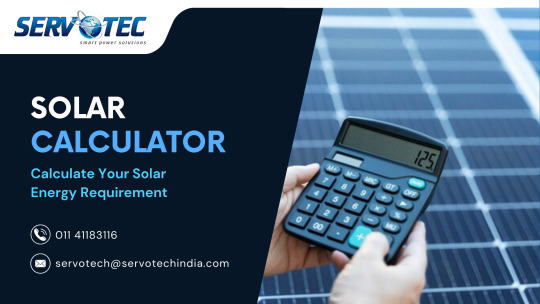#SolarPanelCalculator
Explore tagged Tumblr posts
Text
Unlocking Solar Energy Potential: Insights for Engineers & Enthusiasts
The transition to renewable energy sources, particularly solar power, has gained significant momentum in recent years. With energy efficiency at the forefront of every project, understanding the technicalities of solar power systems can make a world of difference. In this newsletter, we’ll explore essential topics to help you optimize your solar installations, improve project outcomes, and ensure your designs are both efficient and reliable.
And if you’re looking for tools to make solar project planning easier, check out my Solar Power Load Calculator here; a simple, efficient way to calculate your system’s energy needs.
🌟 How to Optimize Solar Panel Placement for Maximum Efficiency
Solar panel placement is one of the most critical aspects of any solar power project. A few factors to keep in mind include:
Orientation and Tilt Angle: In the northern hemisphere, panels should face south at an angle equal to the site’s latitude for optimal sunlight absorption. In contrast, in the southern hemisphere, they should face north.
Minimizing Shadows: Even partial shading can cause a significant drop in energy output. Use tools like solar pathfinders or drone-based imaging to identify potential shading issues.
Spacing Between Panels: To avoid shading from nearby panels during early morning or late afternoon hours, consider row spacing that accounts for the sun’s position throughout the year.
Mounting Type: Fixed-mount systems are cost-effective, but tracking systems (single-axis or dual-axis) can improve efficiency by following the sun’s movement.
Proper placement can increase energy production by 10–25%, depending on location and seasonal variations.
🔌 The Role of Solar Inverters in Project Design
While solar panels generate direct current (DC), most appliances and grid systems run on alternating current (AC). This is where solar inverters come into play. Here’s why they’re crucial:
DC to AC Conversion: Inverters transform DC electricity from solar panels into usable AC power.
Monitoring and Optimization: Modern inverters include monitoring tools that track energy production and detect performance issues. Some even come with maximum power point tracking (MPPT) technology to optimize panel efficiency.
Safety Features: Advanced inverters include protection mechanisms like arc fault detection, ensuring system safety.
Choosing the Right Inverter: Depending on your project, you might select from string inverters, microinverters, or power optimizers. String inverters are cost-effective for large systems, while microinverters provide module-level optimization, ideal for shading-prone areas.
☀️ Designing Solar Projects for Various Climates
Climate conditions significantly affect solar power system design and performance. Tailoring your project to the specific environmental conditions ensures better efficiency and longevity.
Hot Climates:
Cold Climates:
High-Wind Areas:
Humid Environments:
Adapting to these challenges ensures that your solar project delivers consistent energy production regardless of external conditions.
Why Tools Matter: Simplify Load Calculations
Accurate load calculation is the backbone of solar project design. Overestimating can lead to unnecessary costs, while underestimating may leave users with inadequate energy supply. With my Solar Power Load Calculator, you can quickly calculate the connected load for your project, determine energy requirements, and optimize system sizing. This tool is especially helpful for both residential and commercial solar applications.
#SolarPower#LoadCalculator#SolarEnergy#RenewableEnergy#SolarSystemDesign#EnergyEfficiency#SolarPanelCalculator#GreenEnergy#SustainableLiving#SolarSolutions#EnergySavings#CleanEnergy#SolarPowerGuide#SolarCalculator#PowerCalculation
0 notes
Text
Solar Calculator: The ReliableTools For Your Solar Requirements
Solar calculators are indeed useful tools when it comes to calculating your solar panel needs for your home. They take into account several critical factors to provide you with an estimate that can serve as a great starting point for your solar journey.
0 notes
Photo

How many solar panels do I need? To determine what size system will best fit your needs, make a list of all the appliances and devices you plan on running. The main appliances to take into consideration when addressing energy needs may include a TV, lighting, water pump, laptop, fans, microwave, and refrigerator. We recommend inputting that information into the Solarparts solar panel calculator to help determine your specific solar panel needs.
0 notes
Text

Solar Calculator
Plan your Solar Future and estimate your savings with Servotech's solar calculator. Our user-friendly tool helps you estimate solar system requirements, costs, and potential savings. Making informed decisions about transitioning to solar has never been easier. Take a step towards a brighter, sustainable future with Servotech.
0 notes